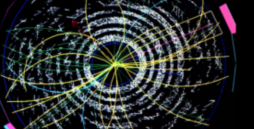Speaker
Mr
Vadim Semenov
(The University of Chicago)
Description
[https://arxiv.org/abs/1704.04239]
We present a physical model that elucidates why gas depletion times in galaxies are long compared to the time scales of the processes driving the evolution of the interstellar medium. We show that global depletion times are not set by any "bottleneck" in the process of gas evolution towards the star-forming state. Instead, depletion times are long because star-forming gas converts only a small fraction of its mass into stars before it is dispersed by dynamical and feedback processes. Thus, complete depletion requires that gas transitions between star-forming and non-star-forming states multiple times. Our model does not rely on the assumption of equilibrium and can be used to interpret trends of depletion times with the properties of observed galaxies and the parameters of star formation and feedback recipes in galaxy simulations. In particular, the model explains the mechanism by which feedback self-regulates star formation rate in simulations and makes it insensitive to the local star formation efficiency. We illustrate our model using the results of an isolated $L_*$-sized disk galaxy simulation that reproduces the observed Kennicutt-Schmidt relation for both molecular and atomic gas. Interestingly, the relation for molecular gas is close to linear on kiloparsec scales, even though a non-linear relation is adopted in simulation cells. This difference is due to stellar feedback, which breaks the self-similar scaling of the gas density PDF with the average gas surface density.
Primary authors
Dr
Andrey Kravtsov
(The University of Chicago)
Dr
Nick Gnedin
(Fermilab)
Mr
Vadim Semenov
(The University of Chicago)
